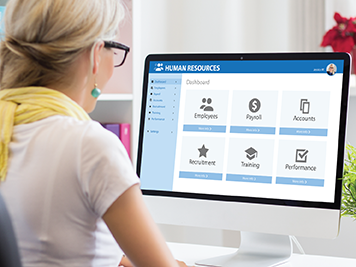Health insurance carriers are constantly looking for ways to improve delivery and management of their plans. Some carriers have adopted a strategy to own and operate their own benefits administration platform. Traditionally, health insurance carriers have relied on third-party benefits administration platforms to manage their insurance plans' enrollment, claims processing, and communication.
In recent years, however, some carriers have taken a different approach by developing or purchasing their own benefit administration platform. This allows them to have more control over the entire process and tailor the platform to their specific needs. But what does it mean for you and your employees?
One of the main challenges is the need for investment in the technology and—more importantly—the ongoing maintenance. Developing and maintaining a robust and secure platform requires substantial financial resources and technical expertise.
Another potential challenge is the potential conflict of interest when a carrier must work with a competing carrier to get plans built or electronic data interchange files set-up. There is a risk that carriers may prioritize their interests over the needs of their customers or limit access to certain providers and services.
To mitigate this risk, carriers should have transparent processes and procedures that show unbiased decision-making. Also, it’s important to consider what will happen to the system and customer service if you leave the carrier at your next renewal.
There are multiple reasons to consider a carrier-provided benefit administration platform. These are:
- Seamless integration
Carrier-provided benefit administration platforms are designed to integrate with the carrier seamlessly and provide a better eligibility and renewal experience for that carrier's lines of coverage.
- Support
Carriers often have a support team offering guidance and assistance through implementation.
- Cost savings
In most cases, using a carrier-provided benefit administration system can result in cost savings for the client.
While there are benefits to using a carrier-provided benefit administration system, there are also reasons why it may not be a great fit. These include:
- Lack of flexibility
Carrier-provided systems may have limitations in terms of customization and flexibility.
- Limited carrier options
By opting for a carrier-provided system, clients may limit their options to a specific carrier or a select few carriers. This can restrict their ability to shop around for other products.
- Vendor lock-in
Once clients commit to a carrier-provided system, they may depend on that carrier for their benefit administration needs. Switching to a different system or carrier in the future can be challenging and may involve significant cost or disruption.
- Lack of innovation
Carrier-provided systems may not always keep pace with the latest technological advancements or industry trends. Clients who prioritize innovation and want access to cutting-edge features and functionalities may find that carrier-provided systems lag behind standalone benefit administration platforms.
Client success stories
Recently, our Marsh McLennan Agency (MMA) technology team had the opportunity to assist a client seeking to implement a cost-effective, stand-alone benefit administration platform. This client was responsible for about 300 lives. Interestingly, the client had several lines of coverage with a carrier that also provides a white-labeled benefit administration platform.
Leveraging their existing relationship with the carrier, the client was able to secure the system at no cost. However, it's important to note that should they ever decide to switch carriers, a per-employee-per-month fee would be applicable to retain the platform.
In a separate instance, another 1,100-life client transitioned to a carrier-owned benefit administration platform and experienced significant improvements in their Evidence of Insurability (EOI) process. The carrier's ownership of the benefit platform facilitated a strong relationship. This enabled the swift setup of file feeds and an automated EOI process within weeks as opposed to the typical timeline of months.
Marsh McLennan Agency is here to help.
If you are looking to make a change and are interested in learning more about the different technology vendors available to you, reach out to the MMA team for guidance.



